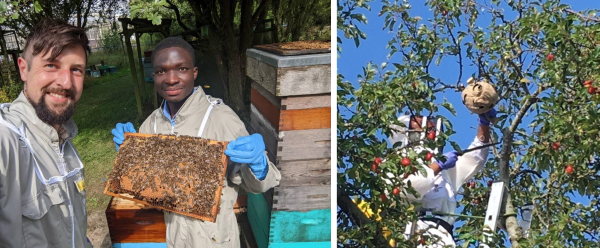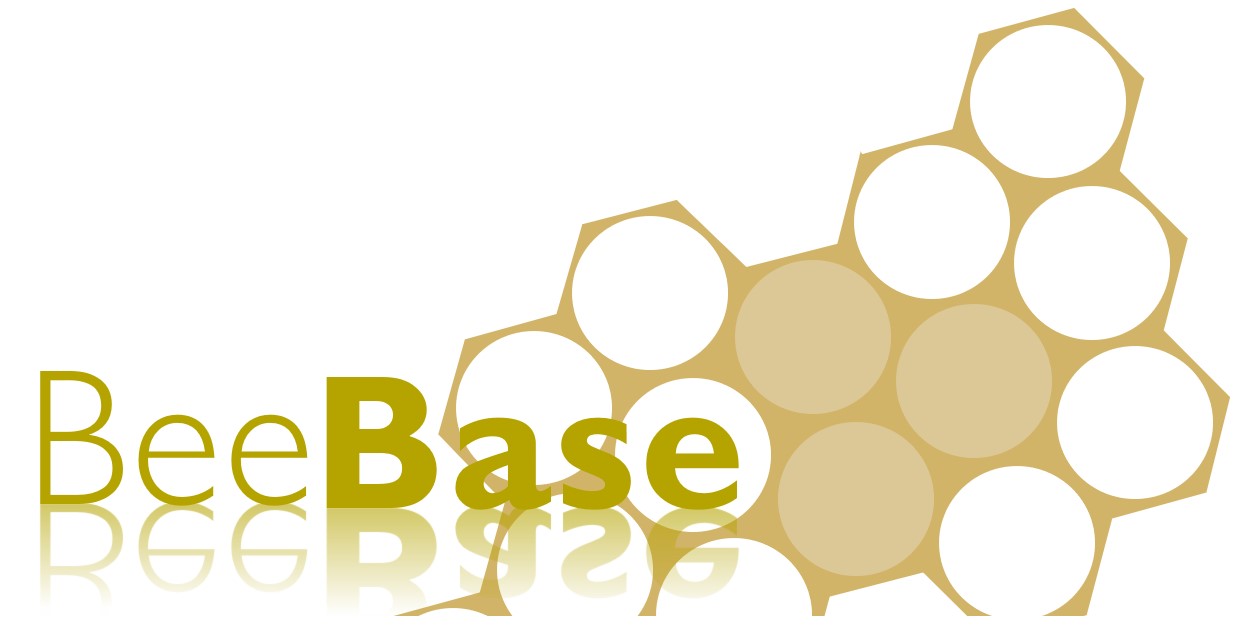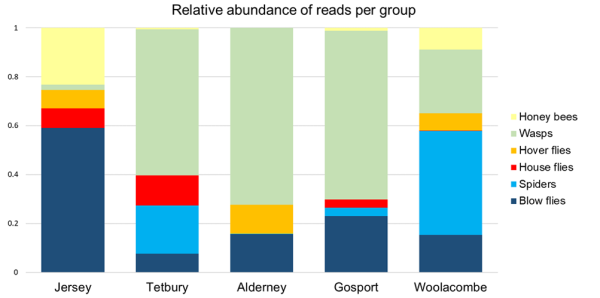The NBU works in partnership with many universities and organisations, both in the UK and overseas, to achieve shared research goals. We have an ongoing research collaboration with Fera Science Ltd, which was created in 2015 as joint venture between the Department for Food Environment and Rural Affairs (Defra) and Capita. Fera Science Ltd and the NBU (as part of the Animal and Plant Health Agency, APHA) are two separate groups that work closely together to provide scientific innovation for the field of honey bee research.
To learn more about how Fera and the NBU work together, view this recent article in BeeCraft: Fera: Behind the scenes at the bee labs.
Projects vary widely in scale and content, but all share the aim of obtaining information that will provide beekeepers, the scientific community and government policy makers with the best advice to improve our collective understanding of honey bee health. Our research programme focusses on providing practical tools to help beekeepers adopt good husbandry practices to mitigate threats and maintain healthy honey bee stocks.
Featured projects
Fera Science Ltd:
Yellow-legged hornet genetic analysis
Since 2016, Fera Science Ltd have been using microsatellite analyses to better understand the nature of the yellow-legged hornet, Vespa velutina nigrithorax, incursion in the UK, from nests sent to them by NBU inspectors. Eleanor Jones and colleagues are able to use microsatellites to determine the diversity of the hornet population, whether nests have produced drones or gynes (future queens), and how many males that queens have mated with. Recent findings from this work can be found in this open-access peer-reviewed paper from Scientific Reports.
This study was featured in The European Commission Environmental News Alert Service publication, “Science for Environment Policy”. A full version of the report can be viewed here.
This work is ongoing through 2023 to present. These analyses allow the NBU to identify sites of potential future incursion to target surveillance efforts in the field. This work is achieved working together in collaboration with the British Beekeepers' Association (BBKA) and Asian hornet action teams (AHTs); learn more here.
Varroa management
For sixteen years, the NBU has been performing the Annual Husbandry Survey of beekeepers to learn more about beekeeping practices. Ben Jones and colleagues at Exeter University have used this data to examine the impact of adherence to recommended Varroa treatments regimens on colony losses. The findings from this paper are currently under review for publication. Learn more about the research on Varroa being performed by Fera Science Ltd in this recent article in the Bee Farmer trade literature.
EFB molecular strain-type analysis
Since 2007, the NBU has been collecting bacterial isolates from outbreaks of European foulbrood (EFB) and American foulbrood (AFB) from across England and Wales. Victoria Tomkies, Ed Haynes and colleagues at Fera Science developed a tool called Multi Locus Sequencing Typing (MLST) for the analysis of different strains of EFB, in collaboration with Giles Budge at Newcastle University. Their analysis of the distribution of different strain types of EFB is helping us understand the spread of this diseases, and in the future may help with disease control. This recent BeeCraft article provides more detail on their work.
This work follows on from decades of research at the NBU towards understanding the biology and management of EFB. The MLST for EFB was developed by NBU scientists, Ed Haynes, Giles Budge and Victoria Tomkies. More about the development of this research tool is published here, and further research using the MLSTs to better understand EFB outbreaks in the UK can be found here.
Using next generation sequencing for yellow-legged (Asian) hornet gut content analysis
Eleanor Jones and Sam McGreig developed a technique using nanopore sequencing technology to identify the prey of yellow-legged hornets by examining the contents of the larval guts. This fascinating project gave a snapshot of the type of prey that Asian hornets capture to feed to developing larvae.
The results show that yellow-legged hornets are predating on many different species of invertebrates, not just honey bees. This has important implications for the serious ecological impact that the yellow-legged hornet could have in the UK, especially the potential for a detrimental impact on sensitive invertebrates species. To learn more, the results were published in an open-access article, which can be viewed here.
This graph shows the relative abundance of different prey items identified from the gut contents of larvae from yellow-legged hornet nests.
Molecular methods for rapid identification of exotic pests
From 2018 to 2020, Fera Science Ltd developed rapid molecular methods for detection of the exotic pests, the yellow-legged hornet, Vespa velutina nigrithorax, and the small hive beetle, Aethina tumida. Kirsty Stainton and colleagues at Fera utilised a methodology called loop mediated isothermal amplification (LAMP) to identify the target pest from a small amount of material, such as a piece of leg, or a small number of eggs, which would be hard for entomologists to identify definitively using morphological methods. Learn more about these diagnostic tests, by viewing the papers online; rapid identification of the invasive small hive beetle and rapid molecular-methods for in-field and laboratory identification of the yellow-legged Asian hornet.
Animal and Plant Health Agency (APHA):
International development
Ghana’s aspirations to grow its honey production and export are hindered by the paucity of information on apiculture (a largely unregulated sector) and bee health in the country. Under the Department for Environment, Food and Rural Affairs's Animal Health System Strengthening project, Dr Flavie Vial (APHA) and NBU inspectors, Colleen Reichling, Jack Silberrad and Peter Davies, are working together with the University of Ghana (UoG) and the Kwasi Nkrumah University of Science & Technology (KNUST) to improve bee health and honey standards in the country.
Our NBU representatives have trained colleagues at both universities on bee management and bee health, and these trainees are being mentored to develop a bee health module for inclusion in the Doctor of Veterinary Medicine programme in Ghana. In addition, bee health surveys have been conducted, and information on local husbandry, pest management practices and indigenous harvesting methods collected, to help the team devise best practices relevant to Ghana’s apiculture.
Find out more about this project in our World Bee Day Blog.
Healthy Bees Plan 2030
The Healthy Bees Plan (HBP) 2030 brings Defra and Welsh Government together with stakeholder groups to protect bee health. The plan has four main outcomes.
- Effective biosecurity and good standards of husbandry, to minimise pest and disease risks and so improve the sustainability of honey bee populations;
- Enhanced skills and production capability/capacity of beekeepers and bee farmers;
- Sound science and evidence underpinning the actions taken to support bee health; and,
- Increased opportunities for knowledge exchange and partnership working on honey bee health and wider pollinator needs.
For more information, including details of the implementation plan with more than fifty actions for beekeepers, bee farmers, associations and government to work on together, please visit the HBP 2030 webpage.
Using data to feedback into small hive beetle contingency planning
Nigel Semmence, the Contingency Planning and Science Officer at NBU oversees a program of continuous improvement using lessons identified from current contingency responses to inform future responses to other exotic pests. For example the use of ArcGIS mapping and reporting for in field data gathering during the current yellow-legged hornet outbreaks. Other improvements include the moving away from a paper-based system to a paperless one for in-field data input, the creation of a BeeBase app that inspectors can use on iPads in the field, along with recent improvements in outbreak mapping, and commissioning the development of molecular techniques for rapid identification of samples in the laboratory. Future developments will include a mathematical model to help analyse the likely spread of exotic pests under different scenarios.
For more information, Nigel has written an article in Bee Farmer outlining this work, and the response for exotic pests is outlined in our contingency plans, which can be found here.
Modelling potential spread of Vespa velutina nigrithorax
Colleagues from Fera Science Ltd., Ben Jones and Eleanor Jones, and APHA, Daniel Warren and Richard Budgey have been working together to model the potential spread of the yellow-legged hornet, Vespa velutina nigrithorax, in the UK.
The aims of the model are to parametrise the reporting probabilities based on proximity to and size of population zones in Great Britain, nest destruction probabilities based on inspector resource and proximity to nests, diploid male production consequent mating opportunities between ‘true’ haploid males and diploid males with new gynes and the effect of continued incursions into a breeding population.

Left: The NBU's Jack Silberrad and Dr Emmanuel Piiru from KNUST examine a colony of honey bees at Sand Hutton in York. Right: Yellow-legged hornet nest removal from Gosport, UK. It is important to understand factors that may affect spread of the yellow-legged hornet in the UK.
Collaborative projects with other organisations:
Enhancing monitoring tools for Tropilaelaps surveillance
Funded by Defra and BDI, inspectors from the NBU and scientists from Fera Science Ltd. travelled to Thailand to better understand the invasive parasitic mite of honey bee brood, Tropilaelaps spp., and sought to develop monitoring tools to improve surveillance programs.
In the UK, the NBU exotic pest surveillance network of sentinel apiaries relies upon sensitive field and laboratory protocols that can reveal an invasive pest species, even at low levels. In 2023, NBU inspectors, Dan Etheridge, Maggie Gill, Paul Davies, George Tonge and Fera scientist, Victoria Tomkies, went to Thailand to test the efficacy of current protocols at detecting Tropilaelaps mites, and test novel methods for mite detection. The outcomes from this study helped the development of refined Tropilaelaps mite detection protocols for deployment in England and Wales for the purposes of exotic pest surveillance. Read more about the practical outcomes from their research here: www.biorxiv.org/content/10.1101/2024.03.26.586849v1.
Bee Diseases insurance: whole apiary shook swarm project
Trials have shown that shaking bees onto new foundation and then destroying the old combs can be beneficial when controlling European foulbrood. This procedure is known as Shook Swarming and it may also be beneficial in controlling Nosema spp., chalk brood and Varroa mite populations. Colonies treated in this way often become the strongest and most productive in an apiary. Some beekeepers are now using this system to replace all the old brood combs in a beehive within a single procedure.
The BDI Whole Apiary Shook Swarm trial is offered for all colonies in an infected apiary when at least one colony has been confirmed as having European foulbrood (EFB) by an Authorised Bee Inspector (ABI). Learn more about this trial on the BDI website.
Prof. Giles Budge, Newcastle University
Chronic bee paralysis virus research
Chronic bee paralysis virus (CBPV) can cause severe disease in honey bee colonies, which leads to colony loss in approximately half of cases. In partnership with BDI and the NBU, Giles Budge and colleagues set out to ascertain whether inspection data from apiary visits by the NBU could be used to gain a better understanding of the epidemiology of CBPV. They found that between 2007 and 2017, reports of CBPV in England and Wales increased exponentially, echoing results from around the world. The results of this study provide further insights into the risk factors involved in outbreaks of CBPV and can be viewed here.
Climatic drivers of bee disease in England and Wales
To better understand the epidemiology of bee diseases in England and Wales, Giles Budge and colleagues used BeeBase inspections data provided by the NBU to better understand the climatic drivers of honey bee disease. They identified that the most common honey bee diseases in England and Wales are sacbrood, chalkbrood and varroosis (parasitic mite syndrome), and also showed that weather variables influenced the disease risk for European foulbrood, varroosis, sacbrood and chalkbrood. To learn more about these findings, please read the paper here.

Research queries
Research samples
If you are a researcher and would like to work with honey bee diseases, please be aware that the causative agents of European foulbrood and American foulbrood, Melissococcus plutonius and Paenibacillus larvae, cannot be handled without a licence. For information on what is required to obtain a licence, please contact: BeeHealth.Info@defra.gov.uk.
If you would like to work with any other diseases, a licence is not required. However, the NBU cannot provide samples of the causative agents of disease. To enquire about obtaining samples, please contact info@fera.co.uk.
Please note that some causative agents of honey bee diseases are not easily cultivated or amenable to long-term storage. We recommend that you consult the COLOSS BeeBook Volume II to learn more about acquiring and processing field samples.
Data sharing
The NBU have access to data and statistics on honey bee diseases in England and Wales. To access data, individuals can submit an FOI request to enquiries@apha.gov.uk.
Learn more about how to make a freedom of information request here: how to make a FOI request.
Please keep in mind that while personal data is collected to fulfil statutory requirements in relation to honey bee biosecurity, pests and disease control and management under UK legislation, we will not allow any unwarranted breach of confidentiality and we will not act in contravention of our obligations under UK data protection legislation. For more information on how we manage personal data, please view the NBU privacy notice here.

